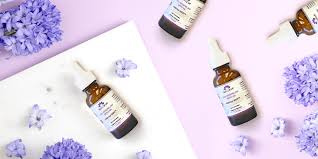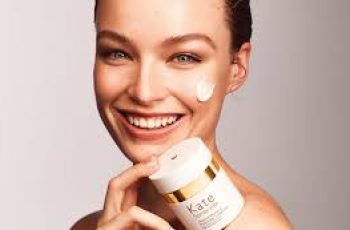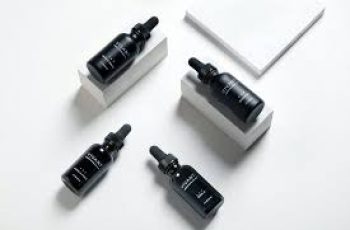
Can You Use Matrixyl and Vitamin C Together?
There are some skin ingredients that were just meant to work together. Vitamin C and matrixyl are certainly a dream team, both of which delivering their own unique benefits for the skin, as well as each working in unison to improve the overall complexion. The difference we have is, matrixyl is such a unique peptide that it does carry its own set of rules when it comes to skincare routine.
This leaves us with the question, how can you use matrixyl and vitamin C together? This will be something we get to the bottom of in today’s blog post, so stick around if you want to find out more.
What is Matrixyl?
Matrixyl is synthetically formulated peptide used in several skincare formulations. Dubbed as Botox in a bottle, you’ll often find it in some of the most effective anti-ageing skincare products.
The way which peptides work is by using a collection of amino acids to create building blocks that help to keep the skin looking younger and healthier with an added boost of collagen production, resulting in signs of ageing, such as fine lines and wrinkles are noticeably improved. You will also find loss of elasticity is improved with signs skin sagging, especially around areas, such as the jaw.
Another benefit of matrixyl is the fact it can stimulate the production of hyaluronic acid. Having the right amount of hyaluronic acid in the body ensures water is draw into the skin and locked into place. This results in face looking plumper, firmer, with a youthful bounce and is certainly an ingredient that should be introducing into your daily routine, especially if you are wanting to target areas of concerns, such as fine lines, and wrinkles.
What is Vitamin C?
Considered one of the most potent antioxidants, vitamin C can provide full protection and prevent oxidised stress to the skin. This skin stress can be a result of exposure to environmental aggressors, such as UV rays, pollution, central heating, and harsh climates.
Once the skin encounters these concerns, you’ll find an array of damage occurs on the skin, such as areas of hyperpigmentation, blotchy patches of skin, dull overall complexion. Vitamin C will not only prevent any further damage but will also work at minimising its appearance. Hyperpigmentation, for example, will lighten more overtime and becoming less noticeable to the naked eye without becoming more pigmented after more sun exposure.
If you wanted to find out more about vitamin C and how it works, check out our dedicated blog post about the clever powerhouse.
What can you not mix with matrixyl?
It is understood that peptides are notoriously unstable ingredients, and so it’s important to have a good understanding how the best actives to team together to deliver the best results. Ingredients such as medical grade vitamin C and copper peptides should be avoided as each of these can have the opposite effect and will even prevent matrixyl from working effectively.
Other potent actives that should be avoided teaming with matrixyl are alpha hydroxy acids (AHA) and beta hydroxy acids (BHA), especially the popular glycolic acid and salicylic acid, both of which are potent exfoliants which can have an increased risk of irritation when teamed with matrixyl.
Can you use matrixyl with vitamin C?
You can, but only if you leave enough time in between applications. It is thought that leaving about 30 minutes will allow the pH levels in the skin to rebalance and settle. It is important you avoid layering these ingredients on top of each other as this can cause increased sensitivity and irritation to the skin surface.
Another way of using vitamin C with matrixyl is to alternate when you apply them to the skin. You can use both in the morning and evening, however many find the vibrant glow you achieve after using vitamin C is thought to good to miss out on in the evenings. Try using vitamin C during your morning routine, followed with matrixyl in your evening routine, this will avoid any unwanted reaction or irritation to the skin whilst helping the skin to become recharged, rejuvenated, and repaired.
Is matrixyl better than vitamin C?
As I have already suggested, matrixyl and vitamin C are both high performing skin ingredients. Whether teamed together or left to deliver results alone you can be sure each will have a marked improvement on the skin. The question of figuring out which is better can feel a little complicated, this is because they each have similar positive impacts on the skin.
These similarities are the fact that both contain antioxidants ensuring the skin surface and its lipid barrier are fully protected from environmental aggressors, such as UV rays, pollution, central heating, and other impurities. Skin concerns, such as discolouration, dark spots, hyperpigmentation, and sun damage are combated.
You’ll also find matrixyl is able to target concerns such as fine lines, wrinkles, and other signs of premature ageing, leaving you with firmer, brighter skin with improved texture and feel. This is something that vitamin C lacks a little, but as I have already suggested, you can team the two actives together in your routine, remembering to leave enough time in between applications.
Is matrixyl the same as retinol?
Believe it or not, matrixyl has gained the nickname of the gentler alternative of retinol as it provides similar results to the skin as the potent powerhouse. With matrixyl working at stimulating the production of collagen and elastin, a trait associated with retinol and other retinoid derivatives. You will also find matrixyl can target fine lines and wrinkles helping to improve the texture of the skin leaving it vibrant and younger looking.
The beauty of both matrixyl and retinol, is the fact you can team the pair together to form a power duo. Opting to use this with other hydrating actives such as hyaluronic acid, you will be able to bypass any dryness or irritation that can often come from using retinol.
I would suggest that if you are new to any of the ingredients mentioned, you should first consult with your doctor or dermatologist to ensure these actives will work for your skin and achieve your skin goals. Don’t forget if you have any further questions, come, and find us on Instagram for more.


